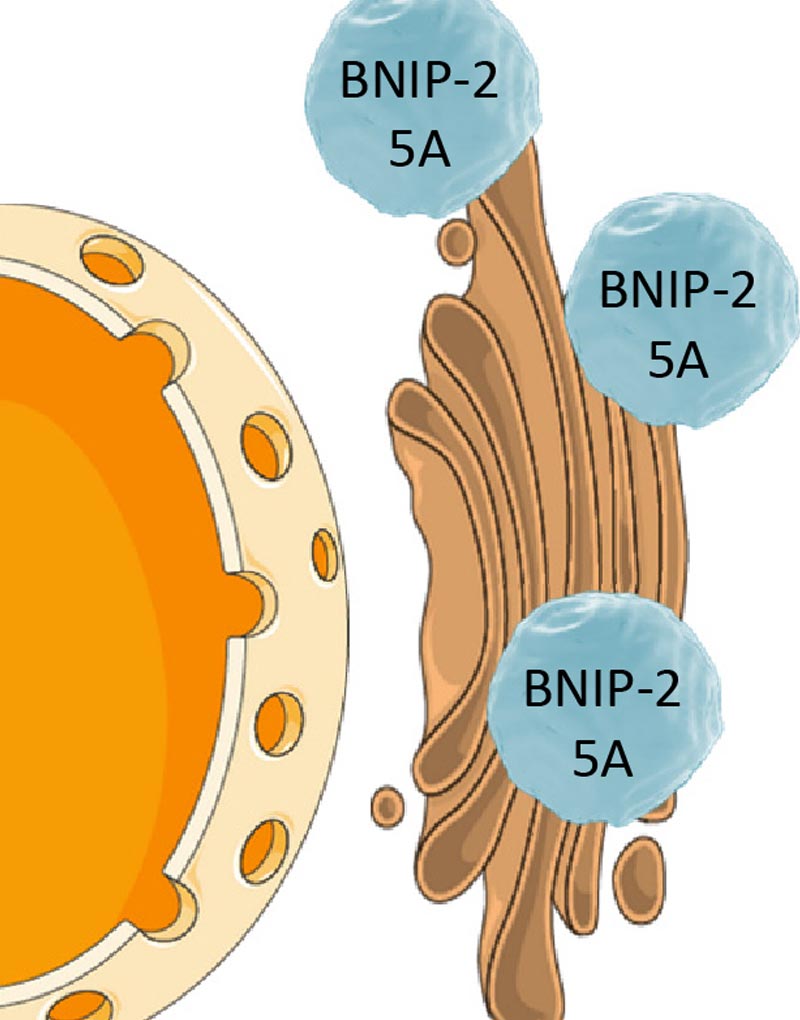The (BP)GAP Between Signaling Pathways
To grow or not to grow?
Sruthi Jagannathan | 11 OCTOBER 2017, illustration by MELANIE LEE
Researchers from the Mechanobiology Institute (MBI), National University of Singapore, under the guidance of Principal Investigator Associate Professor Low Boon Chuan highlight the role of BPGAP1 in linking major signaling pathways during cell proliferation. This study is published in Oncogene [Jiang T, et al. BPGAP1 spatially integrates JNK/ERK signaling crosstalk in oncogenesis. 36(22). 3178-3192].
Ever wondered about the inner workings of the human body? Think of the body as a single, macro-entity, and chances are that you may still not be amazed by this phenomenal system. But, when you start imagining it as an ensemble of trillions of cells that are constantly talking to each other and passing on crucial information about each and every function that takes place inside, you would be, without any doubt, astounded by the complexity of this living machine.
So how do cells talk to each other? By sending out messages in the form of chemical molecules. When these chemical messages reach the receiving cell, they trigger a chain reaction in which one protein switches on or off a second protein, and the second protein switches on or off a third protein, and so on. In this way the message is carried through a series of proteins until it finally reaches inside the nucleus.
The nucleus, which is the information center of the cell, processes the incoming message and scales up or down the production of certain proteins. Such chain reactions are known as signaling pathways, and based on the type of proteins that are scaled up or down, cells decide what they should do next- change shape, grow, divide, move or die.
The signaling short circuit
For instance, signaling pathways are able to directly control how cells divide and grow in numbers. The process, known as cell proliferation, is commonly observed in embryos where cells proliferate to form tissues and organs or during adult life when there is a need to replenish cells that are lost due to damage. However, problems arise when signaling pathways lose their control over this fundamental cellular function. Similar to how short circuits in electrical connections may trip power supplies, so can any short circuits in signaling pathways lead to ‘tripping’ of cellular functions, causing the cells to behave abnormally. In this case, cells may start dividing frantically and form lumps of cancerous tissue that can interfere with normal body functions and often prove to be fatal.
By bringing out the cancer-causing potential of BPGAP1, researchers at MBI discover avenues for its possible use as a therapeutic target in future cancer studies.
Two pathways – JNK and MEK pathways (named after proteins that have important roles in the two pathways) – are well-known to influence the way cells grow and divide. Not surprisingly, short circuits in these pathways have been associated with a number of cancer types. Although a number of studies have provided evidence that JNK and MEK pathways work together to produce effects on cells, it is not very clear how the two pathways are connected during cell proliferation.
A team of researchers at the Mechanobiology Institute (MBI), National University of Singapore, led by Principal Investigator Associate Professor Low Boon Chuan were keen to find out how the two pathways are connected in cells. By carrying out a number of protein-based tests, they found that the JNK and MEK pathways act together as a larger signaling network.
How the signaling network operates:
When chemical messages responsible for growth and proliferation reaches cells, the JNK pathway is triggered as the first level of response. A protein belonging to the JNK pathway, called JNK1, then switches on another protein called BPGAP1 by adding chemical compounds (more specifically, a phosphate molecule) to BPGAP1. The BPGAP1, in its ‘on’ state, recruits two more proteins- MP1 and MEK1- and facilitates interaction between these two proteins. MEK1 belongs to the MEK pathway, and the interaction between MP1 and MEK1 switches on several other proteins in the MEK pathway. The end point of this signaling network is the protein Erk moving into the nucleus, where it affects the production of proteins responsible for cell growth and division.
The study identifies BPGAP1 as the protein that is mainly responsible for linking two major signaling pathways controlling cell growth and proliferation. By being linked, the two pathways are able to talk to each other and maintain a balance in cell numbers. On the flip side, any short circuit in one pathway is easily communicated to the other pathway; proteins in both pathways are erratically switched on that leads to uncontrolled growth and proliferation of cells into tumors. This is evident from a number of studies that show a higher risk for cancer development and recurrence as a result of short circuits in the JNK-MEK signaling network.
By bringing out the cancer-causing potential of BPGAP1, the study creates avenues for its possible use as a therapeutic target in future cancer studies.










